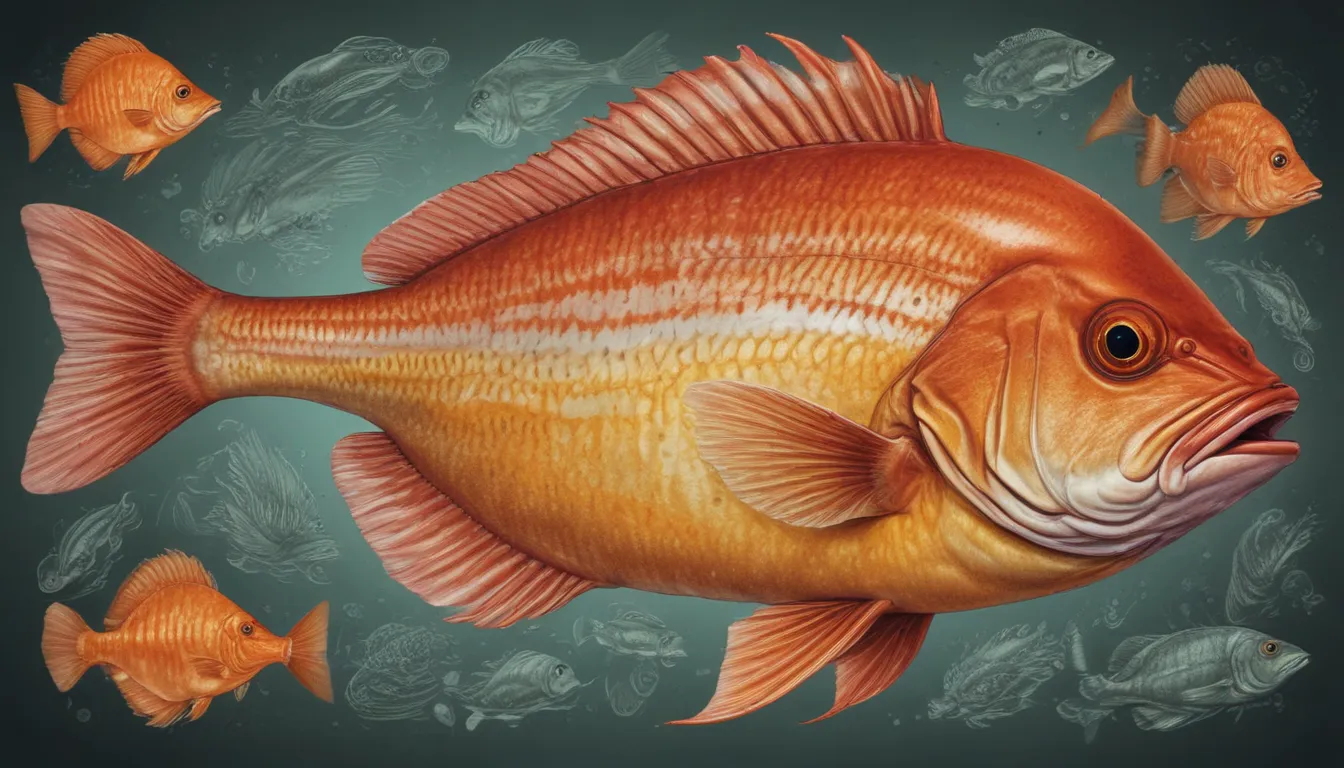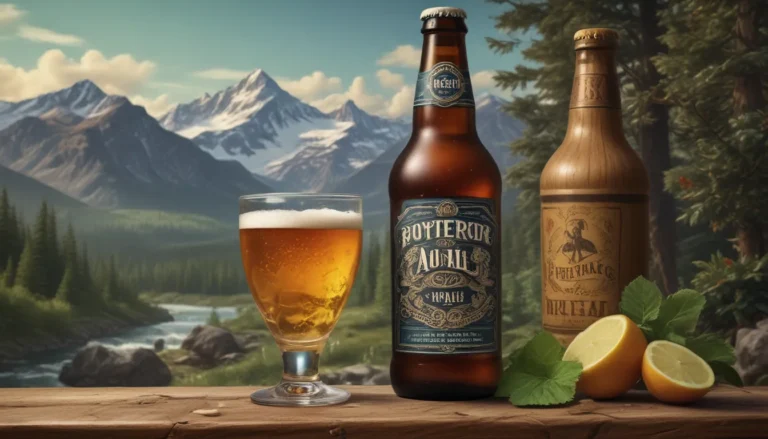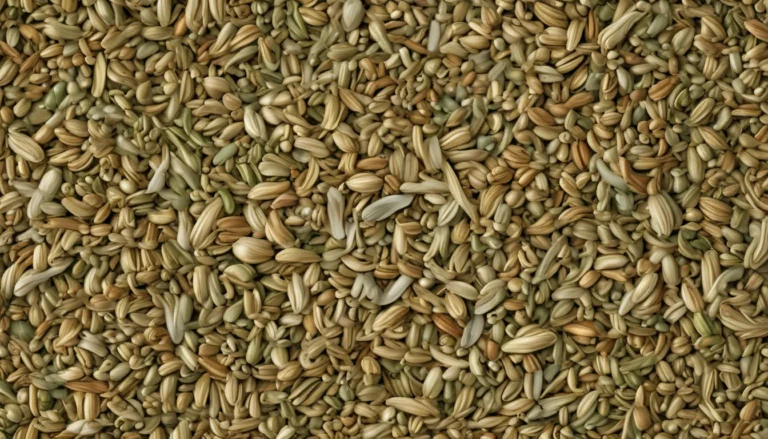The pictures in our articles might not always show exactly what the text is talking about. We use these images to make the article more interesting and eye-catching. They are there to add to the text, but not to replace it or show every detail.
If you're a seafood lover or simply curious about the mysterious orange roughy, get ready to be amazed by these 16 interesting facts about this unique deep-sea fish. From its biology and habitat to its culinary uses and sustainability, there's a lot to uncover about this captivating creature. So, let's dive in and explore the amazing world of orange roughy!
Origin of Orange Roughy
Orange roughy, also known as deep sea perch or slimehead, is a species of fish native to the deep waters of the Atlantic and Pacific Oceans. You can find them near underwater mountains and canyons, adding to their mystique.
The Longevity of Orange Roughy
One of the most remarkable features of orange roughy is its exceptional lifespan. These fish can live for up to an astonishing 150 years, making them one of the longest-living fish species in the world.
A Distinct Appearance
Orange roughy is easily recognizable by its bright orange color, which transforms to a lighter hue when cooked. Its skin is covered in rough scales, giving it a unique and rough texture that adds to its charm.
Habitat of Orange Roughy
Orange roughy calls depths of up to 5,000 feet their home, where the pressure is intense, and temperatures are near freezing. These extreme conditions contribute to their slow growth rate and longevity.
Reproduction of Orange Roughy
With a slow reproductive rate, female orange roughy reach sexual maturity around 20 years of age. Combined with overfishing, this poses a threat to the sustainability of their populations.
The Diet of Orange Roughy
Feeding primarily on small fish, squid, and crustaceans, orange roughy adapts to whatever is available in the deep-sea environment to sustain itself.
A Delicate Flavor Profile
Treasured for its tender, slightly sweet flavor, orange roughy's delicate flesh is often compared to sole or flounder. Its unique taste makes it a popular choice among seafood enthusiasts.
The High Demand for Orange Roughy
Highly sought after in the seafood market for its distinctive taste and texture, orange roughy's popularity has led to overfishing in some regions, causing concern for their declining populations.
Importance of Sustainable Fishing Practices
Addressing concerns about overfishing, initiatives are in place to promote sustainable fishing practices for orange roughy. Setting catch limits, implementing fishing quotas, and protecting critical habitats are crucial steps in safeguarding their future.
Commercial Significance of Orange Roughy
Commercially valued for its role in the seafood industry, orange roughy is a popular choice in fine dining establishments, featured in dishes such as pan-seared fillets and fish tacos.
Vulnerability to Overfishing
Due to their slow growth rate and late reproductive maturity, orange roughy populations are particularly susceptible to overfishing. Careful management of harvesting is vital to secure their long-term survival.
Conservation Efforts for Deep-Sea Habitats
Conservation initiatives are underway to protect orange roughy and preserve their deep-sea environments. Creating marine protected areas and promoting responsible fishing practices are vital for their well-being.
Nutritional Benefits of Orange Roughy
Low in fat and calories while being a good source of protein, orange roughy is also rich in omega-3 fatty acids, offering numerous health benefits to those who enjoy it.
Availability in the Market
While orange roughy can be found in select seafood markets and grocery stores, availability may vary by region. It is commonly sold as frozen fillets or fresh whole fish for consumers to enjoy.
Various Names for Orange Roughy
Known by different names globally, orange roughy is referred to as deep sea perch, red roughy, or slimehead, reflecting its diverse identity in different regions.
Environmental Impact of Overfishing
Overfishing of orange roughy can disrupt the delicate deep-sea ecosystem, emphasizing the importance of sustainable fishing practices to minimize environmental harm.
Conclusion
Orange roughy continues to captivate seafood lovers and scientists with its unique characteristics and delectable flesh. From its longevity and distinctive color to its delicate flavor, there's much to appreciate about this deep-sea treasure. Sustainable fishing practices and conservation efforts play a vital role in ensuring the preservation of orange roughy for future generations to enjoy.
Frequently Asked Questions
Q: How long can an orange roughy live?
A: Orange roughy can live up to an impressive 150 years!
Q: Where is orange roughy typically found?
A: Orange roughy thrives in deep-sea habitats, particularly in the waters of the South Pacific, including regions like New Zealand and Australia.
Q: What gives orange roughy its unique orange color?
A: The orange color of orange roughy is derived from carotenoid pigments in its diet, which consists mainly of krill and other small crustaceans.
Q: Is orange roughy considered a sustainable seafood option?
A: Sustainable fishing practices are essential to protect orange roughy populations. Look for sustainable seafood certifications when purchasing orange roughy.
Q: How does orange roughy taste?
A: With a delicate and mild flavor akin to cod or sole, orange roughy boasts a firm and moist texture that is adaptable to various cooking methods.
Q: In what ways can orange roughy be prepared?
A: Orange roughy is a versatile fish that can be enjoyed grilled, baked, fried, or incorporated into seafood stews and chowders for a delightful meal.
Q: Are there health benefits to eating orange roughy?
A: Orange roughy is a great source of lean protein, omega-3 fatty acids, and essential nutrients like vitamins B12 and D, offering a range of health benefits.
Q: Can orange roughy be frozen?
A: Yes, orange roughy can be frozen for future use. To maintain its quality, wrap it tightly in plastic wrap or store it in a freezer-safe container.
Q: What are alternative fish options if orange roughy is unavailable?
A: If orange roughy is not accessible, consider using similar white-fleshed fish such as haddock, pollock, or flounder as substitutes in recipes.
Q: Are there orange roughy recipes available to try?
A: Absolutely! Explore a variety of delicious orange roughy recipes online, including grilled orange roughy with lemon butter sauce, baked orange roughy with herbs, and orange roughy tacos.
As you uncover the wonders of marine life and conservation, let these fascinating facts about orange roughy inspire you to protect our precious aquatic ecosystems. Explore more captivating articles on ocean conservation, like Soiree For The Sea, to deepen your knowledge and appreciation for the marine world. Join us in promoting sustainable fishing practices and enjoying the delicious diversity of underwater delicacies for a brighter future!






